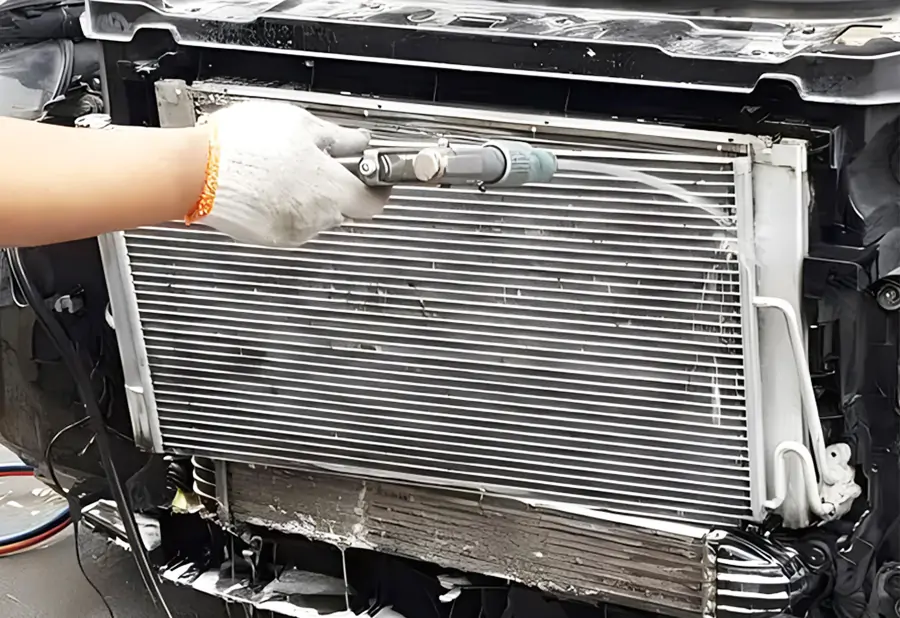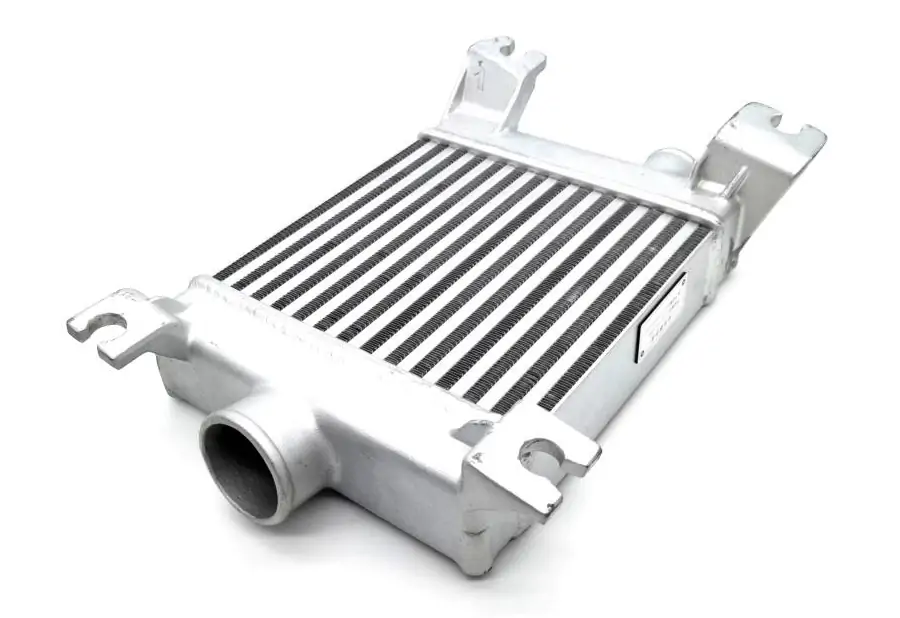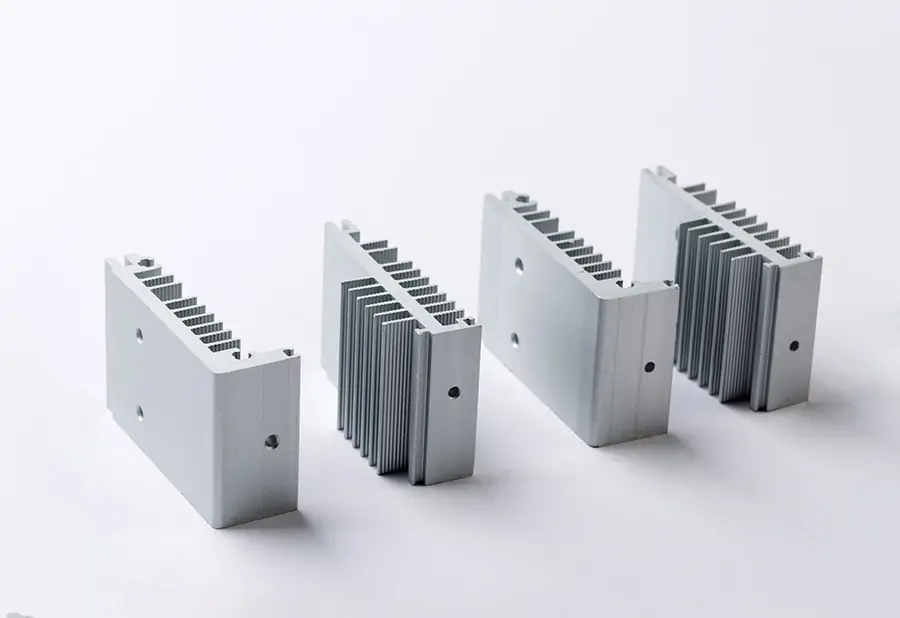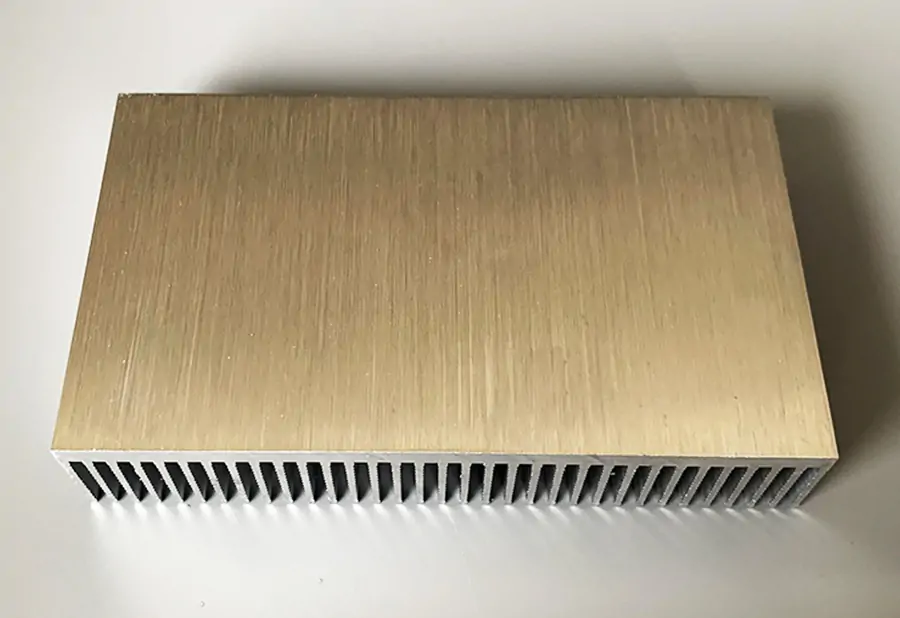When it comes to maximizing the performance and durability of electronic devices, quality heatsinks play avital role. These essential components are responsible for dissipating heat, ensuring that your devices stay cool and function at their best for extended periods.
Choosing heatsinks from reputable manufacturers is crucial to ensure optimum performance. High-quality
heatsinks are designed with precision engineering and utilize superior materials, making them more efficient in heat dissipation. Additionally, reputable manufacturers employ rigorous testing procedures to ensure the reliability and longevity of their heatsinks, providing you with peace of mind.
Investing in quality heatsinks not only ensures efficient cooling but also prevents potential damage caused by overheating. By efficiently dissipating heat, they minimize the risk of thermal throttling, which can significantly impact your device's performance. Moreover, reliable heatsinks can extend the lifespan of electronic components by safeguarding them against excessive heat exposure.
In conclusion, when seeking to boost the performance and durability of your electronic devices, it is essential to consider high-quality heatsinks from reputable manufacturers. Their precision engineering and reliability will help your devices operate optimally for years to come.
Importance of quality heatsinks
Electronic devices generate heat during operation, and excessive heat can lead to performance issues, reduced lifespan, and even permanent damage. Heatsinks are designed to combat this problem by efficiently transferring heat away from crucial components such as processors, graphics cards, and power modules.
Quality heatsinks are crucial for several reasons. Firstly, they are designed with precision engineering to ensure optimal heat dissipation. This means that they are carefully crafted to maximize the surface area available for heat transfer, allowing for efficient cooling. Additionally, reputable manufacturers use high-quality materials that have excellent thermal conductivity properties, such as copper or aluminum. These materials help to dissipate heat quickly, preventing hotspots and ensuring even distribution of temperature across the device.
Factors to consider when choosing a heatsink
When choosing a heatsink for your electronic device, several factors should be taken into consideration to ensure the best possible cooling performance. The first factor is the power dissipation of the device. The heatsink should be capable of handling the amount of heat generated by the device under maximum load. It is essential to check the thermal design power (TDP) of the component you are cooling and choose a heatsink witha thermal resistance rating suitable for that TDP.
Another crucial factor is the physical dimensions of the heatsink. It should fit within the available space in your device without obstructing other components or airflow. Additionally, the heatsink's weight should be taken into account, as excessively heavy heatsinks may put strain on the motherboard or other supporting structures.
The airflow within the device is also a critical consideration. The heatsink should align with the device's airflow path, allowing for efficient heat dissipation. It is essential to ensure that there are no obstructions or restrictions that may impede the airflow across the heatsink. Furthermore, the orientation and positioning of the heatsink can significantly impact its effectiveness. Proper alignment and installation are crucial to achieving optimal cooling performance.
Common types of heatsinks
Heatsinks come in various shapes and sizes, each designed for specific applications and cooling requirements. Some common types of heatsinks include:
- Finned Heatsinks: These heatsinks consist of a baseplate and numerous fins that extend from the base. The fins increase the surface area of the heatsink, allowing for enhanced heat dissipation. Finned heatsinks arewidely used in applications where natural or forced convection cooling is employed.
- Heat Pipes: Heat pipes are sealed copper or aluminum tubes filled with a working fluid. They efficiently transfer heat from the heat source to the finned area of the heatsink. By utilizing the latent heat of vaporization, heat pipes can transport heat with minimal temperature differences, making them highly effective for cooling high-power components.
- Liquid Cooling Systems: Liquid cooling systems use a pump to circulate a coolant, such as water or a specialized liquid, through a network of tubes. The coolant absorbs heat from the electronic component and carries it away to a radiator, where it is dissipated into the surrounding environment. Liquid cooling systems are commonly used in high-performance gaming PCs and overclocked systems.
Benefits of using quality heatsinks
Investing in quality heatsinks from reputable manufacturers offers several benefits for both individuals and businesses. Here are some key advantages:
- Optimal Performance: Quality heatsinks ensure that electronic components operate within their temperature limits, preventing thermal throttling. By efficiently dissipating heat, heatsinks enable devices to maintain optimal performance even during demanding tasks, such as gaming, video editing, or scientific simulations.
- Extended Lifespan: Excessive heat can significantly reduce the lifespan of electronic components. Quality heatsinks help mitigate this risk by keeping the temperature under control. By preventing premature component failure, heatsinks contribute to the overall longevity and reliability of devices, saving users from costly repairs or replacements.
- Energy Efficiency: When devices run hot, they often consume more power to compensate for the increased temperature. By effectively cooling electronic components, quality heatsinks can help reduce power consumption, leading to energy savings and lower electricity bills.
- Quiet Operation: Overheating can trigger cooling fans to operate at higher speeds, resulting in increased noise levels. Quality heatsinks help maintain lower temperatures, allowing fans to operate at lower speeds or even remain idle during light usage. This leads to quieter operation, enhancing the overall user experience.
- Enhanced Overclocking Potential: Overclocking involves increasing the operating frequency of electronic components beyond their default settings, resulting in improved performance. Quality heatsinks play a crucial role in enabling stable overclocking by effectively dissipating the additional heat generated during the process.
How to identify reputable heatsink manufacturers
When investing in quality heatsinks, it is essential to choose reputable manufacturers known for their commitment to quality, performance, and reliability. Here are some key factors to consider when identifying reputable heatsink manufacturers:
- Certifications and Standards: Reputable manufacturers often adhere to industry standards and hold
certifications that validate the quality of their products. Look for manufacturers that comply with ISO
standards and have certifications such as RoHS (Restriction of Hazardous Substances) or UL (Underwriters Laboratories). - Experience and Expertise: Established manufacturers with years of experience in the industry are more likely to produce high-quality heatsinks. Look for companies with a proven track record and a strong reputation within the electronics cooling industry.
- R&D and Innovation: Manufacturers that invest in research and development (R&D) often produce
innovative heatsink designs that provide superior cooling performance. Look for companies that prioritize continuous improvement and technological advancement in their product offerings. - Customer Reviews and Testimonials: Reading customer reviews and testimonials can provide valuable
insights into the quality and performance of heatsinks from specific manufacturers. Look for positive feedback and recommendations from customers who have used the heatsinks in similar applications or devices.

Case studies: Success stories of businesses using quality heatsinks
Many businesses across various industries have benefited from using quality heatsinks in their electronic devices. Here are a few case studies that highlight their success:
- Gaming PC Manufacturer: A leading gaming PC manufacturer improved the performance and reliability of their high-end gaming rigs by incorporating quality heatsinks. The heatsinks effectively dissipated the heat generated by powerful processors and graphics cards, resulting in enhanced gaming experiences for their customers.
- Server Farm Operator: A company operating a large-scale server farm upgraded their cooling infrastructure with quality heatsinks. This led to improved server performance, reduced downtime, and lower maintenance costs. By investing in reliable heatsinks, they were able to ensure uninterrupted operation and deliver consistent service to their clients.
- LED Lighting Manufacturer: An LED lighting manufacturer incorporated quality heatsinks into their
high-power LED fixtures. The heatsinks effectively managed the heat generated by the LEDs, preventing premature failure and ensuring consistent light output over an extended period. This resulted in increased customer satisfaction and reduced warranty claims.
Tips for optimizing heatsink performance
To maximize the effectiveness of your heatsinks, consider the following tips:
- Cleanliness: Regularly clean the heatsinks to remove dust, debris, or any other obstructions that may hinder heat dissipation. Compressed air or a soft brush can be used to clean the fins and other surfaces.
- Thermal Interface Material: Apply an appropriate thermal interface material, such as thermal paste or
thermal pads, between the heatsink and the component being cooled. This helps improve heat transfer by filling any microscopic gaps or imperfections. - Proper Airflow: Ensure proper airflow within the device by organizing cables, removing any blockages, and optimizing fan placement. Adequate airflow helps the heatsink dissipate heat more efficiently.
- Optimal Fan Speeds: Adjust fan speeds based on the device's temperature and workload. Some motherboards or software utilities offer fan control options that can help optimize cooling performance.
- Consider Liquid Cooling: For high-performance systems or applications that generate a significant amount of heat, consider liquid cooling solutions. These advanced cooling systems can provide superior heat dissipation compared to traditional heatsinks.
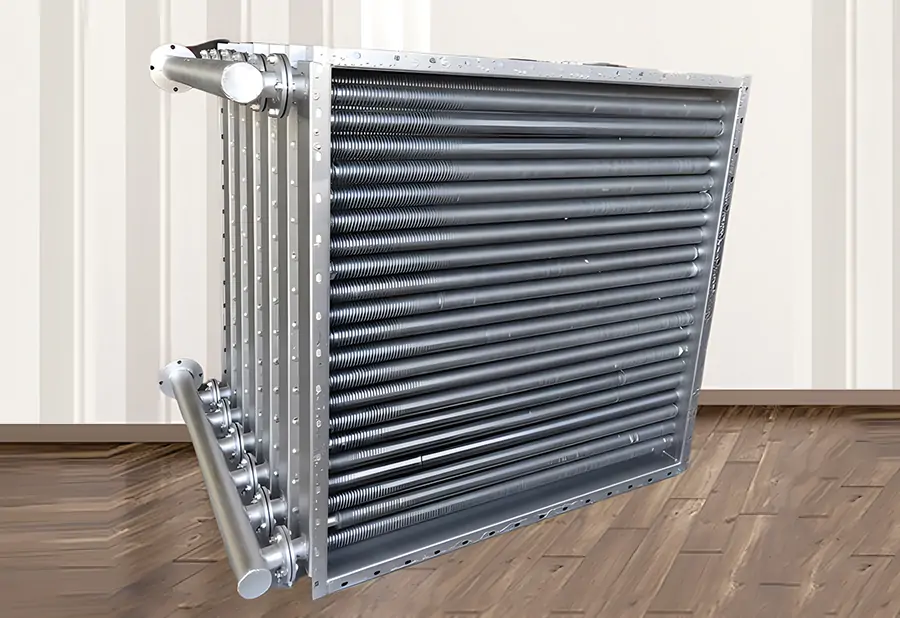
Maintenance and care for heatsinks
To ensure the longevity and optimal performance of your heatsinks, follow these maintenance and care guidelines:
- Regular Inspection: Periodically inspect the heatsinks for any signs of damage, such as bent fins or loose fasteners. Promptly address any issues to prevent further damage or compromised cooling performance.
- Scheduled Cleaning: Establish a regular cleaning schedule to remove dust and debris from the heatsinks. Depending on the environment, this may range from monthly to quarterly cleanings.
- Avoid Physical Damage: Handle heatsinks with care during installation or maintenance to avoid bending or damaging the fins. Additionally, avoid placing heavy objects on top of heatsinks, as this can cause deformation or reduce their cooling effectiveness.
- Follow Manufacturer Guidelines: Refer to the manufacturer's guidelines for specific care instructions and recommended cleaning methods. Different heatsinks may have unique requirements, and following these guidelines will help ensure optimal performance and longevity.
Conclusion: Investing in quality heatsinks for long-term performance
When seeking to boost the performance and durability of your electronic devices, it is essential to consider high-quality heatsinks from reputable manufacturers. Their precision engineering, superior materials, and rigorous testing procedures ensure efficient cooling, prevent damage caused by overheating, and extend the lifespan of electronic components.
By investing in quality heatsinks, you can optimize the performance of your devices, enhance their energy efficiency, and enjoy a longer lifespan. Whether you are a consumer, a business owner, or an electronics enthusiast, choosing reputable heatsink manufacturers will provide you with peace of mind and the confidence that your devices will operate optimally for years to come.

